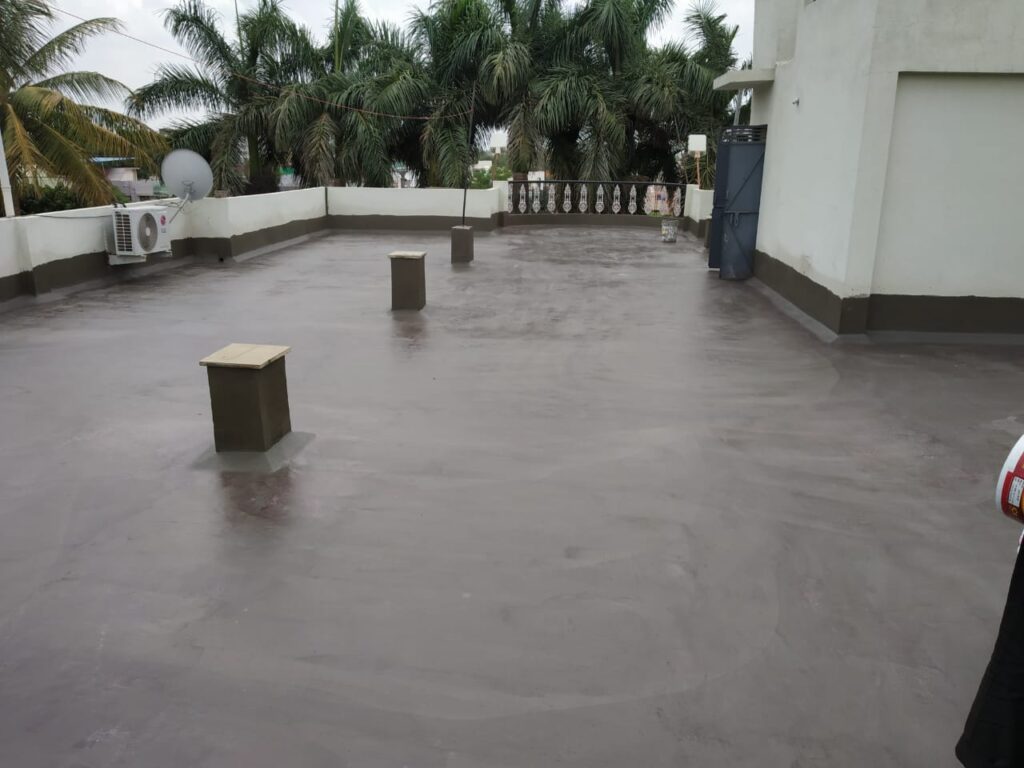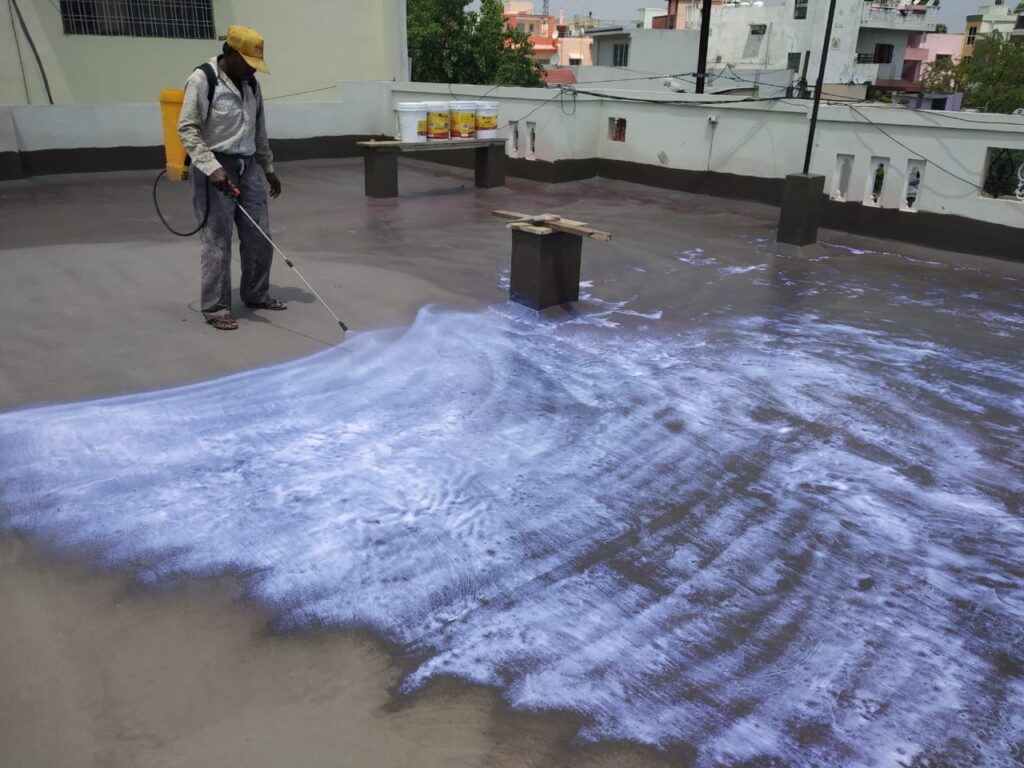Terrace Waterproofing is a mandatory requirement for any building structure. It has been noticed that some builders/Contractors try & avoid Waterproofing believing that their concrete is good enough to stop water penetration which is a myth. There comes the need for Waterproofing.

What if not waterproofing?
Terrace Waterproofing can be done only at the structural stage. It is normally observed that terrace Waterproofing take a back seat in the construction process for which the inmates deeply regret. In recent years expensive remedial work to correct failures in below-grade waterproofing systems has motivated owners and designers to seek high-performance and reliable waterproofing solutions to prevent water ingress with remedial results not successful at eliminating all of the water leaks.
- Choosing inappropriate waterproofing membranes for the wall casting methods
- Construction practices and traffic that damage the waterproofing materials after installation
- Designs and materials that are inappropriate for the site conditions
- Materials that are installed incorrectly
- Construction schedules that do not allow for proper sequence and adequate inspection of the work
- Value engineering that eliminates components of the waterproofing system or decreases the quality of the waterproofing system
The choice of the right method of waterproofing depends on various factors like:
- Area of Terrace slab
- Uses of Terrace
- Climatic Condition
- Condition of Terrace Slab
PROBLEMSDUE TO WATER LEAGE
1. In due course numerous cracks are developed in the lime terracing. Water penetrates through these cracks to the R.C.C. slab below it. Due to shrinkage of cement mortar, lots of cracks are formed on the plaster of the parapet walls. Rainwater seeps through these cracks into the bricks and slowly comes down to the R.C.C. slab.
2. Because of improper compaction, often the concrete of the R.C.C. slab is full of voids and honeycombs. Once the water reaches the R.C.C. slab, it easily seeps inside and corrodes the reinforcement, thus weakening the structure itself.
3. Water, after seeping through the R.C.C. slab, makes the ceiling and walls damp. In severe cases water starts dripping from the ceiling. All these leave ugly patches of dampness on the ceiling and walls and paints peel off.
4. To avoid leakage of water through terrace, often tar felting is done on the terrace. But due to weathering, the tar felt gets cracked within a couple of years and water penetrates through the cracks to come down to the ceiling.

OVERCOME THE PROBLEM OF WATER LEAGE
Engineer Plus has seven layers permanent and guaranteed waterproofing solution in India. Engineer Plus has the best way to waterproofing of an old concrete roof by the use of best waterproofing chemicals coating in seven layer. Each layer has an importance role and make use of best waterproofing chemicals which are manufacture by Engineer Plus only. In short I describe the working of seven layer waterproofing:
First you need to clean the surface by rubbing with wire brush and then wash with water. Repairing of cracks work will be carried out as per requirement on the surface. Now in the 1st layer, Engineer Plus Aquasil-99 and Engineer Plus Aquaprime-99 will be use with water. In 2nd and 3rd layer, Engineer Plus WAC-99 and Engineer Plus ICS-99 will be use withcement and Fiber Mash. In the 4th and 5th layer, known for highly crack resistant coating by the use of Engineer Plus WAC-99 and Engineer Plus ICS-99 with cement. And in the 6th and 7th layer, Engineer Plus WPC-99 and Engineer Plus Aquasil-99 will be use.
The ratio of chemical coating will be different in each layer. The importance of seven layer waterproofing represent permanent and guaranteed waterproofing.
For more details about seven layer waterproofing, please watch this video:
